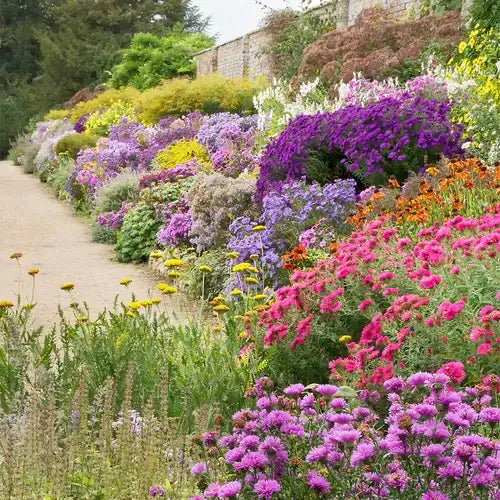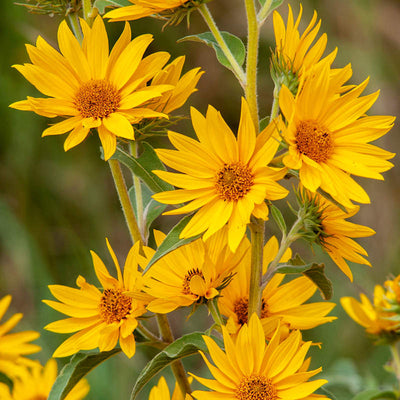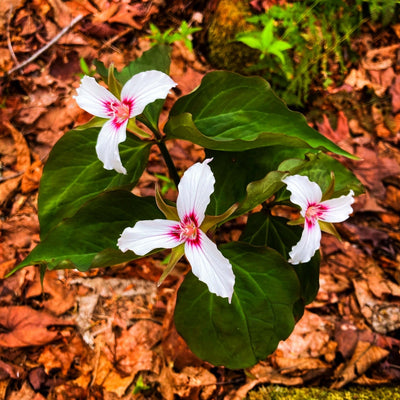Gardening is a rewarding and therapeutic hobby. It allows you to connect with nature, beautify your surroundings, and grow your food. However, only some have the time or expertise to tend to high-maintenance plants.
Thankfully, numerous garden plants are well-suited for beginners and those with busy schedules. This guide will explore ten easy garden plants to cultivate, requiring minimal effort while providing maximum aesthetic appeal and potential harvests.
Lavender (Lavandula spp.)
Lavender is famous for its delightful fragrance, attractive appearance, and low-maintenance nature. These aromatic herbs thrive in sunny locations with well-draining soil. Once established, lavender requires minimal water and can withstand dry conditions. Regular pruning after flowering encourages healthy growth and a compact shape.
Succulents and Cacti:
Succulents and cacti are known for their water-storing abilities. They come in various shapes, sizes, and colors, making them versatile. These plants require infrequent watering and can thrive in multiple light conditions. Their unique appearance adds a touch of charm to any garden.
Basil (Ocimum basilicum) Herbs like basil are great for adding flavor to your dishes and are easy to cultivate. Basil prefers sunlight and well-draining soil. Regular harvesting of its leaves promotes bushier growth. With its vibrant green leaves and aromatic presence, basil is a must-have in any beginner's garden.
Zinnias (Zinnia spp.) Zinnias are an excellent choice for those looking to add a burst of color to their garden with minimal effort. These annual flowers come in various hues and bloom from late spring until the first frost. Zinnias can thrive in multiple soil types and require minimal maintenance apart from deadheading spent blooms.
Cherry Tomatoes (Solanum lycopersicum) Growing your tomatoes can be incredibly rewarding, and cherry tomatoes are particularly beginner-friendly. These compact plants can be grown in containers or garden beds with ample sunlight. Regular watering and a little support for their vines are usually all needed to enjoy a bountiful harvest.
Marigolds (Tagetes spp.) Marigolds are known for their pest-repelling properties and vibrant flowers. These hardy annuals can tolerate different soil conditions and thrive in full sun. Once established, marigolds require minimal care, and their blooms can last from spring until the first frost.
Mint (Mentha spp.) Mint is a resilient herb that can be invasive if left unchecked, making it a good candidate for container gardening. Mint leaves can be harvested for culinary use, and regular pinching of the back of its stems helps maintain its shape.
Sunflowers (Helianthus spp.) Sunflowers are not only a symbol of summer but also an easy-to-grow garden plant. These cheerful giants thrive in well-draining soil and plenty of sunlight. With their rapid growth and towering presence, sunflowers will surely be a focal point in your garden. Once they start to bloom, they require minimal attention.
Chives (Allium schoenoprasum) are a perennial that requires little maintenance. Chives produce edible purple flowers that look attractive and support pollinators in your garden.
Lemon Balm (Melissa officinalis) Lemon balm is a fragrant herb in the mint family. It is known for its calming properties and can be used in teas. Lemon balm prefers partial shade and moist soil. Regular harvesting of its leaves can help prevent the plant from becoming too leggy.
Gardening can be a simple endeavor
These ten garden plants offer a variety of colors, scents, and flavors while requiring minimal effort in terms of care. Whether you're a beginner with little gardening experience or someone with a busy schedule, these plants are sure to bring joy and satisfaction to your gardening journey.
Remember to consider your local climate and soil conditions when selecting plants, and don't hesitate to experiment and learn as you go. Happy gardening! At its core, gardening involves preparing a patch of land or a container, selecting plants, sowing seeds, planting younglings, and providing them with the care they need to thrive. Its fundamental principles are simple: sunlight, water, soil, and a touch of patience.
When appropriately orchestrated, these essential elements pave the way for a flourishing garden. To embark on this journey, one must first choose the location. It could be a sunny windowsill, a spacious backyard, or a tiny balcony. The choice of plants follows next. It's essential to consider the local climate, soil type, and the amount of sunlight the chosen area receives.
Once the seeds or plants are in place, they require a consistent water supply. This seemingly simple task is crucial and requires attention to prevent overwatering or underwatering, which can be detrimental. Soil, the lifeblood of any garden, should be nourished with compost or organic matter to provide essential nutrients to the plants. This basic understanding of the plant-soil relationship enhances the chances of a successful garden.
Regular weeding and pest control, using natural methods whenever possible, maintain the health of the plants. Observing the garden's progression and being attuned to the needs of each plant are additional uncomplicated yet crucial aspects of gardening.
Patience is the most underestimated virtue in gardening. As the plants take root, their growth unfolds at its own pace. Gardening teaches us to be patient observers of nature's rhythm. Each plant's journey from a tiny seed to a full-grown specimen is a testament to the simplicity and complexity of life. The rewards of gardening are as simple as the process itself. The satisfaction of seeing a plant flourish under your care, the joy of plucking fresh produce from your garden, and the solace found amid nature's beauty is immeasurable.
Gardening also encourages a sustainable mindset, as it reconnects us with the cycles of the earth
In a world that often bombards us with complexities and fast-paced living, gardening beckons us to slow down and appreciate life's simple pleasures. It's an activity that transcends age, culture, and background, reminding us of our inherent connection to the natural world.




